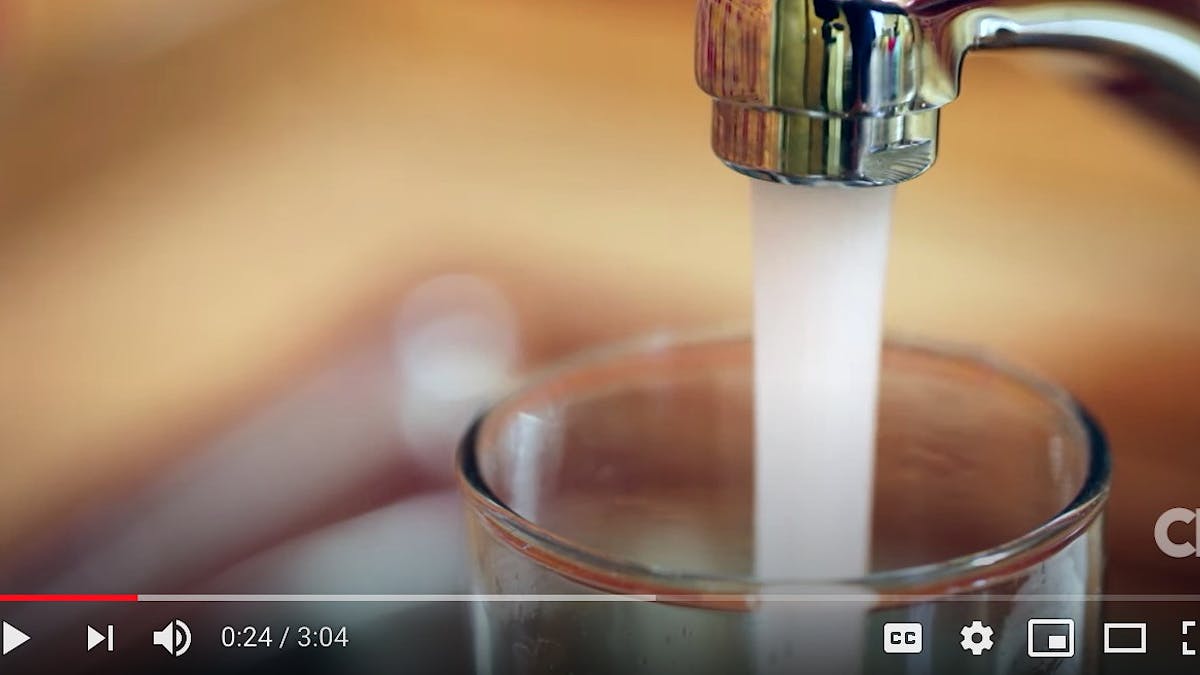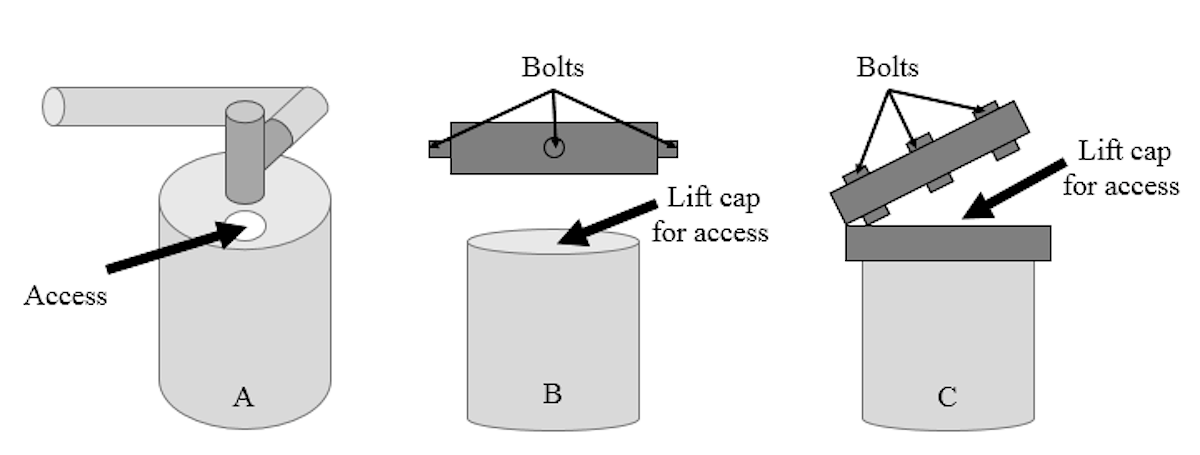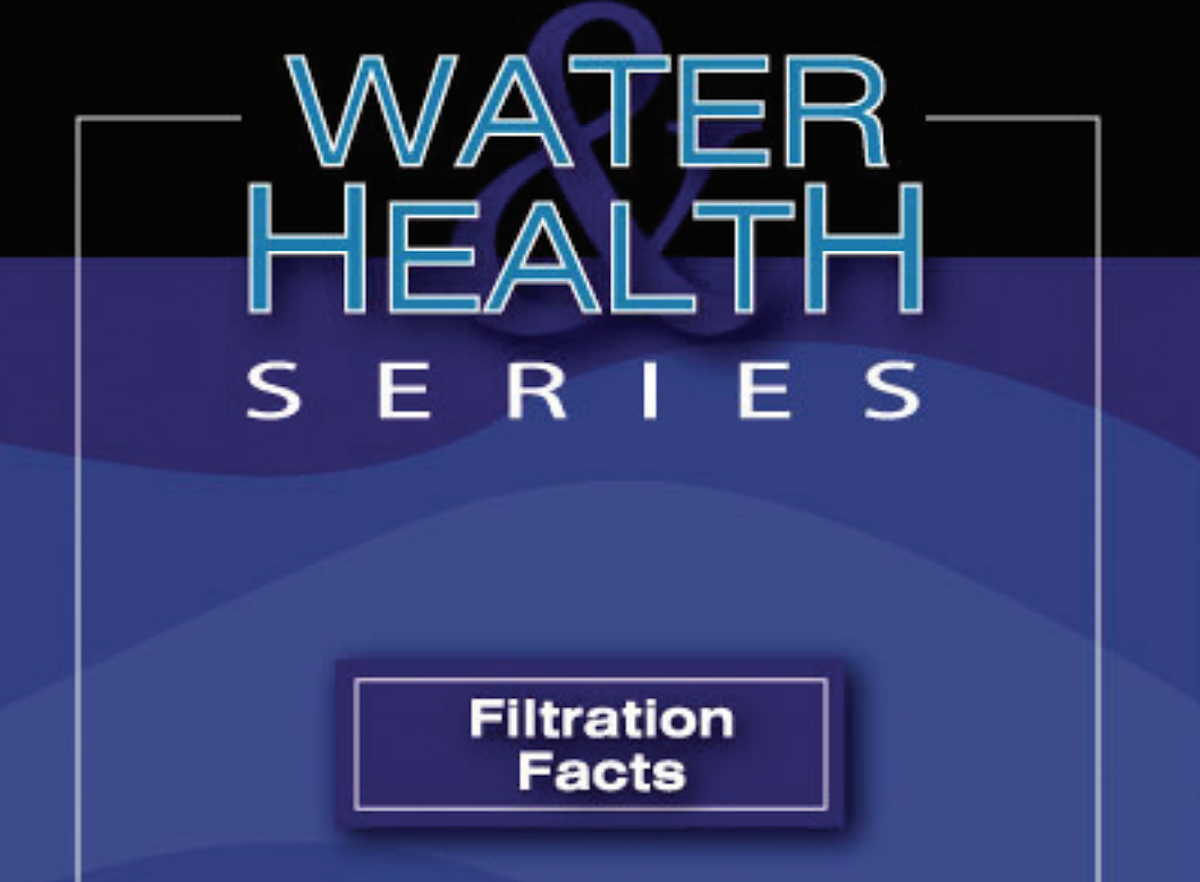Water Treatment

- Citizen's Guide
- Chapter 3: Your Water
- 3.2 Drinking Water
- Water Treatment
- Table of Contents
- Chapter 1: Government Agencies & Environmental Regulations
- Chapter 2: Public Participation in Government
- Chapter 3: Your Water
- Chapter 4: Your Air
- Chapter 5: Your Land
- Chapter 6: Emergency Preparedness
- Guide Wrap-Up
- Additional Resources & Contact Information
- Credits, Dedication & Thanks
Regardless of where your water comes from, it can be exposed to a variety of contaminants before it reaches your tap, from environmental contaminants at the source of your drinking water to old pipes within your home. No matter what the situation may be, we all want to know: how do I make sure my water is as clean as possible?
How Can I Filter My Water?
Treatment Methods and cost
| Filtration Method | What it can treat/remove | How much does it cost? |
|---|---|---|
| Filter Pitchers | Pesticides. Lead | $20 - $100 depending on model |
| Reverse Osmosis Unit | Lead, nitrates, bacteria | $100 - $500+ |
| Distillers | Bacteria | $100 - $400 |
| Water Softeners | Hardness | $500 - $2000 |
| Adsorptive media | Arsenic | 1000s of dollars |

The U.S. EPA has produced several informative pamphlets that cover all sorts of information related to drinking water filtration. Click the image at right to learn about home filtration and the image below to see how to identify filters that can reduce lead in your drinking water.

In addition to filtering your water, if your water comes from a private well, you may need to disinfect your well in the instance that it has become contaminated. A step by step process for disinfecting your water well can be found below.
How do I clean my well?
There are several good protocols available online to instruct you on how to disinfect a well. The following is a modified version of “How to Disinfect a Private Well System In 7 Steps”, which was developed by Texas A&M AgriLife Extension, Mississippi State University Extension, Louisiana State University Health Science Center, Virginia Tech, and FEMA Region 6. An online version of the protocol can be found at: http://twon.tamu.edu/media/668950/waterwell_tri-fold__state_10-13-17.pdf
What you should know before drinking your well water.
After a flood, the water in your well may be contaminated. Ingesting or being exposed to contaminated water may cause sickness. Disinfection can eliminate or reduce harmful bacteria, viruses, or other microorganisms that may be found in your drinking water.
Contaminants could include:
- manure
- sewage
- treatment plant wastewater
- nearby flooded septic system matter
If you think your well system may be contaminated, alternative drinking water options include: using bottled water, water boiled for one minute, or water from a source you know is not contaminated.
Tools Needed
- Wrench to access the well
- A garden hose long enough to reach from an outdoor faucet to the well
- Protective goggles/gloves
- Clean five-gallon bucket
- Five gallons of uncontaminated water (e.g., bottled water)
- Funnel
- Unscented household liquid bleach less than six months old
- Distilled white vinegar
- At-home chlorine and pH test kits
If your well system is damaged, the following instructions for the disinfection process will not work. An indication that your well is damaged can be a decrease in water pressure once turned on. Contact a certified well or pump contractor to examine and repair your well system.
This method is for private wells with a submersible pump only. For private wells with a jet pump, contact a well water professional or your local health department. To ensure a safe and effective disinfection process, follow these directions step-by-step:
STEP-BY-STEP INSTRUCTIONS
STEP 1 Flush the well:
- Remove all debris near the well. Check the well for damage. Remember, if your well is damaged, this process will not work.
- Turn on an outdoor faucet and run the water until it runs clear
- Test the water pH using an at-home test kit
STEP 2 Power Off:
- Turn off electrical power to the pump by turning off the circuit breaker.
- Disconnect water softeners and household water filters by switching to bypass mode or the “out of service” position.
STEP 3 Open the Well:
- For a well seal (Figure A), remove the threaded well plug for access; for a well cap (Figure B) or sanitary cap (Figure C), remove the bolts from the cap and lift for access. For a well cover, lift or push the cover away for access.
- If your well system does not look like the options below, call a certified well contractor for further assistance.

STEP 4 Mixing Directions:
- Fill the five-gallon bucket about three-fourths full with clean, uncontaminated water.
- Use Table 1 to determine how much bleach and vinegar are needed.
- Add bleach to the bucket of water.
- Using the funnel, pour the bleach solution into the thread well plug or well casing.
- Add in vinegar, if needed(The Ohio Department of Health recommends using 3 parts vinegar to 1 part bleach)
How to Calculate How Much Bleach
The amount of bleach to be used in the disinfection process will depend on the water depth inside your well. To calculate the water depth in well, subtract the static water level (distance from land surface to the water in the top of the well) from the total depth of the well. If you are uncertain of your static water level, use the total measurement of the total well depth.

**** Be careful not to splash/spill the solution ****
STEP 5 Recirculate the Chlorinated Water:
- Turn on electrical power to the pump by turning on the circuit breaker.
- Connect the garden hose to an outdoor faucet.
- For a well seal: place the funnel into your well’s access point and put the garden hose into the funnel. Be careful not to let the chlorinated water enter your septic system. For well caps and covers: place the garden hose into the well casing.
- Turn the water on and let it run for 15 minutes to circulate the bleach within the well.
- After 15 minutes, measure the chlorine levels in the water using an at-home chlorine test kit.
- If there [target concentration] or more of chlorine, continue to Step 6.
- If not, add in more bleach. Repeat Steps 4 and 5.
STEP 6 Run Chlorine Solution Through Faucets:
- Run the chlorinated water throughout the outside spigots and work your way inside the house by turning on each tap one at a time until you smell bleach.
- Repeat this step for both hot and cold taps, toilet, and shower/bath taps.
- Leave the chlorinated water in the plumbing for at least [target time] hours (e.g., overnight).
[We recommend a target CT value of 300 mg*hr/L to ensure disinfection of Cryptosporidium. The CT value can be achieved using different combinations of concentrations and stagnation times, as CT = concentration*time.]
STEP 7 Flush the Chlorinated Water:
- Connect garden hose to an outdoor faucet and run the water until you no longer smell chlorine.
- Keep the running water away from your septic system, landscaping, and bodies of water.
- Turn off the garden hose once you can no longer smell chlorine. Measure the chlorine with an at-home test kit to confirm.
- Begin turning on each fixture inside the house one at a time until the chlorine smell is no longer present.
STEP 8 Disinfect Water and Reconnect Treatments:
- Disinfect home water softener or household filters according to the manufacturer’s instructions and then reconnect those devices.
**** DO NOT DRINK THE WATER UNTIL IT HAS BEEN TESTED FOR THE PRESENCE OF TOTAL COLIFORM AND E. COLI BACTERIA. ****
IMPORTANT: Before using the water for drinking, cooking, making ice or preparing food, have the water tested by a certified water testing lab. If disinfection attempts fail, the well may need to be cleaned before it is disinfected again. Contact a contractor or local health department for help.
